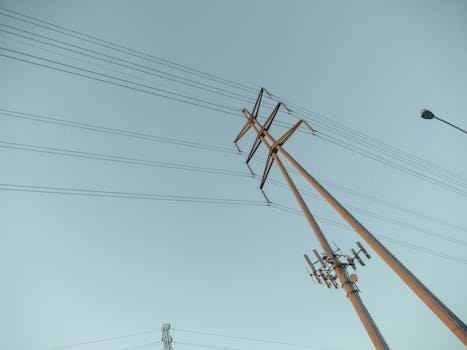“From Sun to Storage: Powering Tomorrow, One Battery at a Time.”
The journey of solar energy from the sun to storage involves a complex yet fascinating process that transforms sunlight into usable electricity and stores it for later use. This journey begins with solar panels that capture sunlight and convert it into direct current (DC) electricity through photovoltaic cells. The electricity is then routed through an inverter, which transforms it into alternating current (AC) for household use. To ensure a reliable power supply, especially during periods of low sunlight or high demand, this energy is stored in solar batteries. These batteries, designed to efficiently store and release energy, play a crucial role in maximizing the benefits of solar power, enabling users to harness renewable energy around the clock. Understanding this complete solar battery journey highlights the importance of energy storage in the transition to sustainable energy solutions.
Solar Energy Generation: Harnessing the Power of the Sun
Solar energy generation is a transformative process that harnesses the abundant power of the sun, converting sunlight into usable electricity. This process begins with solar panels, which are typically composed of photovoltaic (PV) cells made from semiconductor materials like silicon. When sunlight strikes these cells, it excites electrons, creating an electric current. This phenomenon, known as the photovoltaic effect, is the cornerstone of solar energy technology. As sunlight is a renewable resource, solar energy generation offers a sustainable alternative to fossil fuels, significantly reducing greenhouse gas emissions and contributing to a cleaner environment.
Once the solar panels capture sunlight and convert it into direct current (DC) electricity, the next step involves inverting this electricity into alternating current (AC), which is the form of electricity used in most homes and businesses. This conversion is achieved through an inverter, a crucial component of any solar energy system. The inverter not only facilitates the transformation of DC to AC but also optimizes the energy output from the solar panels, ensuring that the system operates efficiently under varying sunlight conditions. As a result, homeowners and businesses can utilize the generated electricity to power their appliances, lighting, and other electrical devices.
Moreover, the efficiency of solar energy generation is influenced by several factors, including the angle and orientation of the solar panels, the geographic location, and the time of year. For instance, solar panels installed at an optimal angle can capture more sunlight, thereby increasing energy production. Additionally, advancements in solar technology, such as bifacial panels that capture sunlight from both sides, have further enhanced the efficiency of solar energy systems. As the technology continues to evolve, the potential for harnessing solar energy becomes even more promising.
In conjunction with the generation of solar energy, the integration of energy storage solutions has become increasingly important. As solar energy is inherently intermittent—producing electricity only during daylight hours—energy storage systems, such as solar batteries, play a vital role in ensuring a reliable power supply. These batteries store excess energy generated during sunny periods, allowing users to access this stored energy during times of low sunlight or at night. This capability not only enhances energy independence but also provides a buffer against fluctuations in energy demand.
Furthermore, the growing adoption of solar energy generation and storage systems is supported by various incentives and policies aimed at promoting renewable energy. Governments around the world are implementing tax credits, rebates, and net metering programs to encourage the installation of solar panels and batteries. These initiatives not only make solar energy more accessible but also stimulate economic growth by creating jobs in the renewable energy sector.
As the global community increasingly recognizes the importance of transitioning to sustainable energy sources, solar energy generation stands out as a viable solution. The journey from sunlight to stored energy exemplifies the potential of harnessing natural resources to meet our energy needs while minimizing environmental impact. By investing in solar technology and energy storage solutions, individuals and businesses can contribute to a more sustainable future, reducing reliance on fossil fuels and paving the way for a cleaner, greener planet. In conclusion, the complete solar battery journey—from the initial capture of sunlight to the storage of energy—illustrates the remarkable capabilities of solar energy and its role in shaping a sustainable energy landscape for generations to come.
Battery Types: Choosing the Right Solar Storage Solution
When it comes to harnessing solar energy, the choice of battery type is crucial for optimizing energy storage and ensuring that your system meets your specific needs. With various options available, understanding the characteristics and benefits of each battery type can help you make an informed decision. The most common types of batteries used in solar energy systems include lead-acid, lithium-ion, and flow batteries, each offering distinct advantages and disadvantages.
Lead-acid batteries have been a staple in energy storage for decades, primarily due to their affordability and widespread availability. They come in two main varieties: flooded and sealed. Flooded lead-acid batteries require regular maintenance, including checking water levels and equalizing charges, which can be a drawback for some users. However, their lower initial cost makes them an attractive option for those on a budget. On the other hand, sealed lead-acid batteries, such as absorbed glass mat (AGM) and gel batteries, offer the advantage of being maintenance-free, making them more convenient for residential applications. Despite their lower energy density and shorter lifespan compared to other battery types, lead-acid batteries can still be a viable choice for users with less demanding energy storage needs.
Transitioning to lithium-ion batteries, we find that they have gained immense popularity in recent years, primarily due to their superior performance characteristics. These batteries boast a higher energy density, which means they can store more energy in a smaller and lighter package. This feature is particularly beneficial for homeowners with limited space for energy storage systems. Additionally, lithium-ion batteries have a longer lifespan, often lasting up to 10 years or more, and they require minimal maintenance. Their ability to discharge deeper without significant degradation makes them ideal for applications where energy demand fluctuates. However, the initial investment for lithium-ion batteries is typically higher than that of lead-acid options, which can be a consideration for those looking to minimize upfront costs.
Another emerging technology in the solar battery landscape is flow batteries. These systems utilize liquid electrolytes to store energy, allowing for scalability and flexibility in energy storage capacity. Flow batteries are particularly advantageous for larger installations, such as commercial or utility-scale solar projects, where energy demands can be substantial. One of the key benefits of flow batteries is their long cycle life and the ability to discharge completely without damaging the battery. This characteristic makes them suitable for applications requiring frequent cycling. However, flow batteries are still relatively new to the market, and their higher complexity and cost can be a barrier for some users.
As you consider which battery type is right for your solar storage solution, it is essential to evaluate your specific energy needs, budget, and installation space. For those seeking a cost-effective solution with lower energy demands, lead-acid batteries may suffice. Conversely, if you prioritize performance, longevity, and minimal maintenance, lithium-ion batteries could be the better choice. For larger-scale applications, flow batteries offer unique advantages that may align with your energy storage goals.
Ultimately, the decision on which battery type to choose will depend on a combination of factors, including your energy consumption patterns, financial considerations, and long-term goals for your solar energy system. By carefully weighing these elements, you can select the most suitable solar battery solution that will effectively store the energy generated from your solar panels, ensuring that you maximize the benefits of your investment in renewable energy.
Installation Process: Setting Up Your Solar Battery System
The installation process of a solar battery system is a critical step in harnessing solar energy effectively. It begins with a thorough assessment of your energy needs and the existing solar panel setup. Understanding your energy consumption patterns is essential, as it helps determine the size and capacity of the battery required. This initial evaluation often involves consulting with a professional installer who can provide insights into the best options available based on your specific circumstances.
Once the energy requirements are established, the next phase involves selecting the appropriate solar battery. Various types of batteries are available, including lithium-ion, lead-acid, and flow batteries, each with its own advantages and disadvantages. Lithium-ion batteries, for instance, are popular due to their high energy density and longer lifespan, while lead-acid batteries are often more affordable but may require more maintenance. After selecting the right battery, the installation team will prepare for the physical setup, which includes determining the optimal location for the battery. This location should be easily accessible for maintenance and monitoring while also being protected from extreme weather conditions.
The installation process typically begins with the mounting of the battery system. This involves securing the battery to a wall or a dedicated platform, ensuring it is stable and safe. Following this, the installer will connect the battery to the solar inverter, which is responsible for converting the direct current (DC) generated by the solar panels into alternating current (AC) for use in your home. This connection is crucial, as it allows the battery to store excess energy produced during sunny days for use during periods of low sunlight or high demand.
In addition to connecting the battery to the inverter, the installation process also includes integrating the battery with your home’s electrical system. This step often requires the expertise of a licensed electrician, who will ensure that all connections comply with local electrical codes and safety standards. Proper integration is vital, as it allows for seamless energy flow between the solar panels, battery, and your home’s electrical system. During this phase, the installer may also set up a monitoring system that enables you to track energy production, consumption, and battery status in real-time.
Once the physical installation is complete, the system undergoes rigorous testing to ensure everything functions correctly. This testing phase is essential, as it verifies that the battery is charging and discharging as intended and that all safety mechanisms are operational. After successful testing, the installer will provide you with a comprehensive overview of how to operate and maintain your solar battery system. This includes guidance on monitoring energy levels, understanding the battery’s performance, and recognizing any potential issues that may arise.
Finally, it is important to consider the long-term maintenance of your solar battery system. Regular checks and updates can help prolong the life of the battery and ensure optimal performance. Many installers offer maintenance packages that include periodic inspections and software updates, which can be beneficial in keeping your system running smoothly. By understanding the installation process and committing to ongoing maintenance, homeowners can maximize the benefits of their solar battery systems, ultimately leading to greater energy independence and sustainability.
Maintenance Tips: Ensuring Longevity of Your Solar Batteries
To ensure the longevity of your solar batteries, it is essential to adopt a proactive maintenance approach that encompasses various practices and considerations. First and foremost, regular monitoring of battery performance is crucial. This involves checking the state of charge, voltage levels, and overall health of the batteries. By keeping a close eye on these metrics, you can identify any potential issues early on, allowing for timely interventions that can prevent more significant problems down the line.
In addition to monitoring, it is vital to maintain the cleanliness of the battery terminals and connections. Dust, dirt, and corrosion can accumulate over time, leading to poor electrical connections and reduced efficiency. To mitigate this, periodically inspect the terminals and clean them using a mixture of baking soda and water, which effectively neutralizes any corrosion. After cleaning, ensure that the connections are tight and secure, as loose connections can lead to energy loss and overheating.
Temperature control is another critical factor in prolonging the life of solar batteries. Most batteries operate optimally within a specific temperature range, typically between 20°C to 25°C (68°F to 77°F). Extreme temperatures, whether hot or cold, can adversely affect battery performance and lifespan. Therefore, it is advisable to install batteries in a climate-controlled environment, away from direct sunlight and extreme weather conditions. If your batteries are housed outdoors, consider using insulated enclosures or battery cabinets that can help regulate temperature.
Furthermore, it is essential to understand the charging cycles of your solar batteries. Overcharging and deep discharging can significantly shorten battery life. To avoid these issues, utilize a quality charge controller that can manage the charging process effectively. This device will help ensure that the batteries are charged to the appropriate levels without exceeding their capacity. Additionally, it is beneficial to perform regular equalization charges, especially for lead-acid batteries. This process helps balance the charge across all cells, preventing sulfation and enhancing overall performance.
Another important aspect of maintenance is to keep an eye on the battery’s electrolyte levels, particularly for flooded lead-acid batteries. Regularly check the water levels and top them off with distilled water as needed. Maintaining the correct electrolyte level is crucial for optimal battery function and longevity. However, it is important to avoid overfilling, as this can lead to spillage and potential damage.
Moreover, it is advisable to conduct periodic capacity tests to assess the health of your batteries. This involves discharging the batteries under controlled conditions and measuring their performance. By comparing the results to the manufacturer’s specifications, you can determine if the batteries are still functioning optimally or if they require replacement.
Lastly, always refer to the manufacturer’s guidelines for specific maintenance recommendations tailored to your battery type. Each battery technology, whether lithium-ion, lead-acid, or others, may have unique requirements that are essential for ensuring longevity. By adhering to these guidelines and implementing the aforementioned practices, you can significantly enhance the lifespan and efficiency of your solar batteries. In conclusion, a combination of regular monitoring, cleanliness, temperature control, proper charging practices, and adherence to manufacturer recommendations will create a robust maintenance routine that safeguards your investment in solar energy storage.
Q&A
1. **What is the first step in the solar battery journey?**
The first step is the generation of solar energy through photovoltaic (PV) panels that convert sunlight into electricity.
2. **How is solar energy stored in batteries?**
Solar energy is stored in batteries through a process called charging, where the generated electricity is used to convert chemical energy into stored energy within the battery.
3. **What types of batteries are commonly used for solar energy storage?**
Common types of batteries used for solar energy storage include lithium-ion batteries, lead-acid batteries, and flow batteries.
4. **What happens to the stored energy when it is needed?**
When energy is needed, the stored chemical energy in the battery is converted back into electrical energy, which can then be used to power homes or businesses.
Conclusion
The journey from sun to storage in solar battery systems involves several key stages: solar energy generation through photovoltaic panels, conversion of sunlight into electricity, and the subsequent storage of this energy in batteries for later use. This process not only enhances energy efficiency and reliability but also supports the transition to renewable energy sources. Ultimately, the complete solar battery journey underscores the importance of integrating solar technology with energy storage solutions to create a sustainable and resilient energy future.




